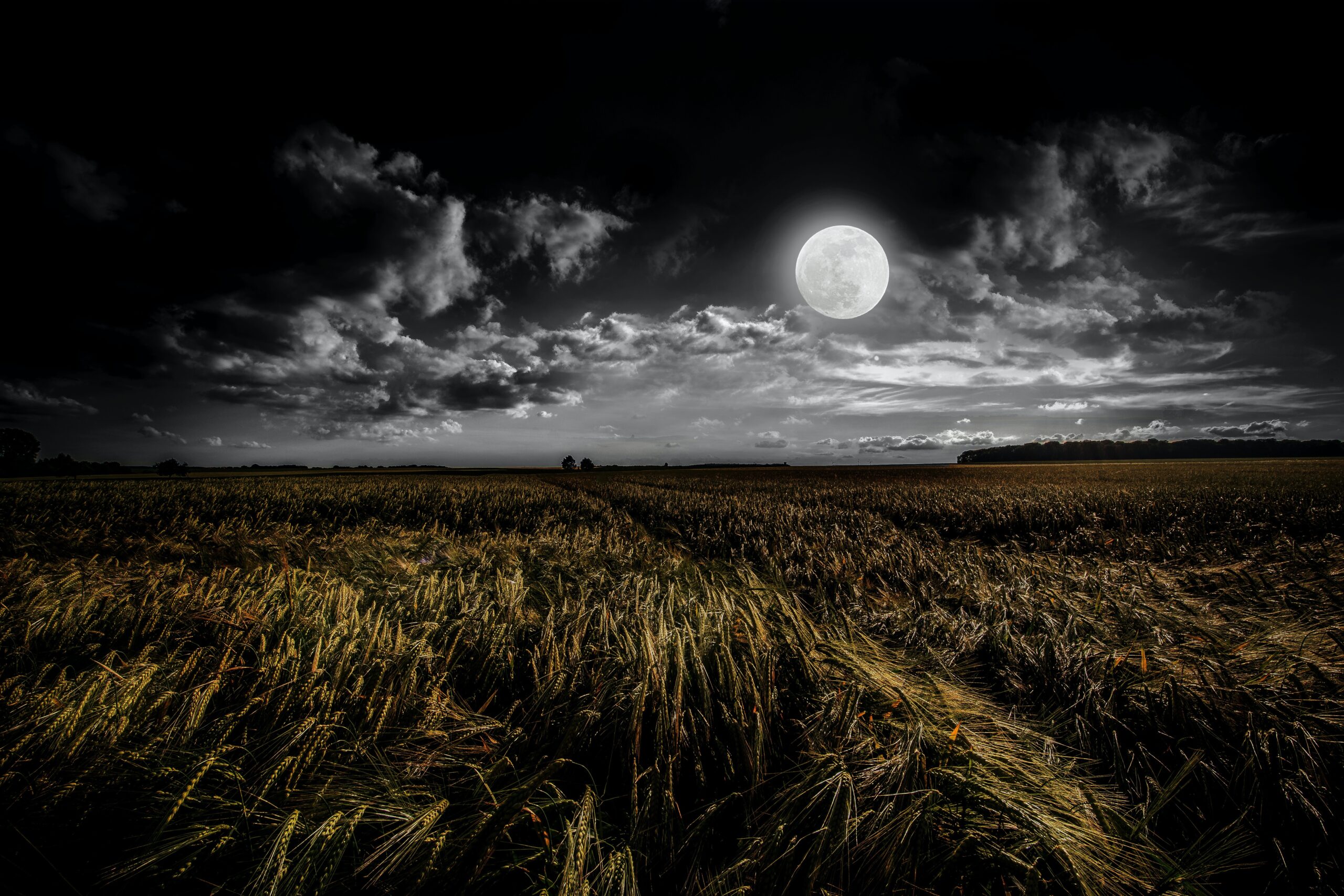In the vast expanse of the night sky, the moon embarks on a cyclical journey, waxing and waning, casting its silvery glow upon the Earth. This age-old celestial ballet has not just been a source of wonder for poets and astronomers, but it has deeply influenced agriculture’s tapestry, guiding farmers in their eternal quest for bountiful harvests. As someone born and raised in the rural South, I grew up hearing about the Farmer’s Almanac way before I had gotten myself involved in agriculture, farming and permaculture. Everyone I knew that was serious about farming swore by it, and I never quite understood why…so for this blog post I decided to share some research I had found on the Farmer’s Almanac. What I didn’t expect was for me to feel so SEEN in my separate studies of astrology and ecology and to find agriculture supplanted as the marriage of the two.
The Lunar Influence: Agriculture’s Celestial Compass
The connection between lunar cycles and agriculture is steeped in ancient wisdom, passed down through generations. The gravitational forces exerted by the moon influence Earth’s tides. Similarly, these forces are believed to affect the water content in the soil, impacting plant growth. Many traditional farming cultures plant certain crops during the new moon when moisture levels are highest, and others during the waning phase when conditions are considered favorable for root development. A study from the University of Milan in 2013 even suggested that lunar cycles might influence the germination of certain plant species, underscoring the significance of this age-old belief.
The Farmer’s Almanac: Time-Honored Wisdom Meets Modern Agriculture
First published in 1818 by David Young, a former teacher and amateur astronomer, and Jacob Mann, a publisher, the Almanac was born in Morristown, New Jersey. Their aim was to create a guide that would provide long-range weather predictions to help farmers plan their planting and harvests better. Beyond mere weather predictions, it integrates lunar calendars, zodiac signs, and time-honored agricultural wisdom. This blend of folklore, celestial observations, and agricultural advice has secured its place in the heart of the farming community. Its predictions, based on a mysterious mathematical formula, consider factors like sunspot activity, tidal action, and planetary positions. While science has made leaps in agricultural practices, the Almanac’s enduring popularity underscores the human yearning for understanding nature through both empirical evidence and ancestral knowledge.Over time, this annual publication became a household name across North America, not only for its accuracy but for its blend of wit, wisdom, and practical advice.
Drawing from Ancestral Wellsprings: The Almanac’s roots are firmly embedded in ancient traditions, even though it doesn’t explicitly say it on the pages. Similar to David Holmgren’s Principles and Pathways Beyond Sustainability, there is a foundation laid upon indigenous traditions in order to package things for modern problems. Uniquely though, the Farmer’s Almanac combines astronomical and meteorological observations with folklore, drawing from the vast reservoir of indigenous and agrarian wisdom. Here are some things I appreciated about the Farmer’s Almanac, in reference to keeping indigenous traditions alive and preserving them for future generations:
- Lunar Lore: Many ancient cultures observed the moon’s phases and their impact on agriculture. The Almanac continues this tradition, providing guidelines on when to plant or harvest based on the lunar cycle.
- Zodiac Influence: Astrological beliefs also find their way into the Almanac’s pages. It’s believed that each sign of the zodiac governs a certain part of the body, which I know from studying astrology and was surprised to see this knowledge is used to determine the best days for specific farm tasks.
- Natural Indicators: Observing animals, birds, and even insects has long been a method to predict weather changes. The Almanac often includes these natural indicators, drawing from folk beliefs about animal behavior and upcoming weather patterns.
- Holistic Healing: Beyond farming, the Almanac offers home remedies, using natural ingredients, for common ailments, reviving recipes and treatments that have been handed down through generations.
Overall, I certainly understood the charm and appeal of The Farmer’s Almanac, but I was way more impressed by the journey it takes you on — one that starts in the distant past, touches upon indigenous practices and folk traditions, and finds relevance in today’s gardens. It is certainly a guidepost that has stood the test of time.
Lunar Cycles and Agriculture: A Testament to Sustainability
As we consider what it means to champion sustainable farming, it is important to recognized that the rhythm set with the land is more successful when aligned with nature’s rhythms. In addition, it is looking at the entire system in a way that encourages practices that replenish the soil, conserve water, and harness natural predators against pests, which is the more holistic approach. By aligning with the moon’s phases, farmers stand a chance at fostering a balanced ecosystem, which includes promoting environmental health and bountiful yields.
Even in our technologically advanced age, some ancient rhythms – the pulse of the moon, the turn of the seasons, the wisdom of nature – continue to guide, nourish, and inspire. As we navigate the challenges of modern agriculture, perhaps the key lies in looking up at the night sky, drawing from its wisdom, and planting seeds in harmony with the universe.


